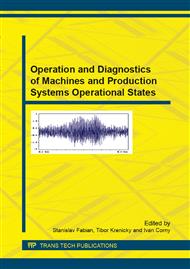[1]
E. J. Vinarcik, High integrity die casting processes, John Wiley & Sons, (2002).
Google Scholar
[2]
M. Rimar, J. Pitel, Control of plunger motion, Acta Mechanica Slovaca, (2008) 213-218.
Google Scholar
[3]
J. Paško, J. Malik, Š. Gašpár, J. Novak-Marcinčin, Influence of technological parameters of die castning on qualitative properties of castings, Manufacturing engineering and technology, (2010), pp.3-6.
Google Scholar
[4]
V. Modrak, Evaluation of structural properties for buisness processes, ICEIS Proceedings of the Sixth International Conference on Enterprise Information Systems, (2004) 619-622.
Google Scholar
[5]
P.A. Fishwick, Computer simulation: growth through extension, Transactions of the Society for Computer Simulation International. 4 (1997) 13-23.
Google Scholar
[6]
R. Krehel, J. Dobransky, T. Krenicky, Mathematical model of technological processes with prediction of operating determining value Acta Technica Corviniensis, Bulletin of Engineering. 2 (2009) 39-42.
Google Scholar
[7]
E. H. Page, P. A. Farrington, H. B. Nembhard, D. T. Sturrock , G. W. Evans, David M. Nicol, Osman Balci, and Richard M. Fujimoto, Panel: Strategic Directions in Simulation Research, Proceedings of Winter Simulation Conference, (1999) 1509-1520.
DOI: 10.1109/wsc.1999.816887
Google Scholar
[8]
K. Velten, Mathematical Modeling and Simulation Introduction for Scientists and Engineers, John Wiley & Sons. (2008).
Google Scholar
[9]
B. Jain, S. Turner, and S.J. Hsu, Distributed supply chain simulation across enterprise boundaries, Proceedings of Winter Simulation Conference, 2 (2000) 1245-1251.
DOI: 10.1109/wsc.2000.899092
Google Scholar
[10]
S. Fabian, J. Pancurova, Qualitative analysis of pressure die casting technology, Materialove inzinierstvo. 10 (2003) 363-366.
Google Scholar
[11]
E. P. Degarmo, J. T. Black, and R. A. Kosher, Materials and processes in manufacturing, John Wiley & Sons. (2003).
Google Scholar


